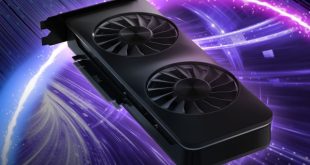We have built a system inside a Lian Li chassis with no case fans and have used a fanless cooler on our CPU. The motherboard is also passively cooled. This gives us a build with almost completely passive cooling and it means we can measure noise of just the graphics card inside the system when we run looped 3dMark tests.
We measure from a distance of around 1 meter from the closed chassis and 4 foot from the ground to mirror a real world situation. Ambient noise in the room measures close to the limits of our sound meter at 28dBa.
Why do this? Well this means we can eliminate secondary noise pollution in the test room and concentrate on only the video card. It also brings us slightly closer to industry standards, such as DIN 45635.
KitGuru noise guide
10dBA – Normal Breathing/Rustling Leaves
20-25dBA – Whisper
30dBA – High Quality Computer fan
40dBA – A Bubbling Brook, or a Refridgerator
50dBA – Normal Conversation
60dBA – Laughter
70dBA – Vacuum Cleaner or Hairdryer
80dBA – City Traffic or a Garbage Disposal
90dBA – Motorcycle or Lawnmower
100dBA – MP3 player at maximum output
110dBA – Orchestra
120dBA – Front row rock concert/Jet Engine
130dBA – Threshold of Pain
140dBA – Military Jet takeoff/Gunshot (close range)
160dBA – Instant Perforation of eardrum

I have been quite vocal in the past regarding my feelings about reference AMD coolers. Nvidia can build them well (the GTX Titan is proof of this), but AMD have always struggled.
The cooler on the AMD R9 290X is not too bad, but it really should have been better.
When Quiet mode is enabled, the card is audible under load, but it rates very closely against the GTX Titan cooler – which is commendable. The only problem is our testing has shown today that at this setting, the core clock speed downclocks when the cooler can't cope with the 95c default temperature settings.
We therefore have to advise our readers to use the UBER setting with the fan speed increased from a maximum of 40% to 55%. When the single fan is spinning at 55% it emits almost 36 dBa of noise, which is perfectly audible. The pitching of the small AMD fan isn't pleasant either. When tasked with Furmark the fan spins up from 2,300 rpm to around 3,000 rpm.
I have to admit that AMD's strategy sometimes seems puzzling to me. They know that partners such as Sapphire can product fantastic heatpipe style coolers, but they force a reference launch featuring their own reference cooler. We really should be focusing on the incredible performance of the hardware today, not the cooler.
 KitGuru KitGuru.net – Tech News | Hardware News | Hardware Reviews | IOS | Mobile | Gaming | Graphics Cards
KitGuru KitGuru.net – Tech News | Hardware News | Hardware Reviews | IOS | Mobile | Gaming | Graphics Cards


